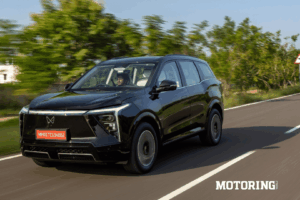Sportscars come in all shapes and sizes, but not all of them leave a lasting impression. And certainly not all of them can stand the test of time, especially when the competition is brutal, the target audience shrinking, and number of deterrents increasing. Keeping all of which in mind, the Nissan GT-R seems to have done a pretty magnificent job. We thought it would be a nice homage to its predecessors to look at how the car has evolved over time, especially since it turns 50 next year.

Humble origins are almost the norm in case of sports cars and the car which first wore the ‘GT-R’ badge was no different. It was based on the Skyline saloon, and had two more doors than the current GT-Rs. Known as Hakosuka among enthusiasts — it wasn’t ‘Godzilla’ always — the first-generation car was rear-wheel drive, had a high-revving inline six engine, and was, later in its life, offered as a two-door coupe as well. The coupe was slightly lighter, and with a shorter wheelbase and other sporty bits, turned out to be more driver-orientated than before.

The generation which followed was more of an evolution of the Hakosuka. The good bits like the inline-six engine and rear-wheel drive were retained, but Nissan worked on the styling, hence making the Skyline GT-R’s sporting looks even better. Only available in a two-door coupe version, the second-generation (C110) Nissan Skyline GT-R was the sign of things to come. Sadly with the world going berserk over oil crisis, the car didn’t stay in the market for long.
There were Skylines (even one in a hot avatar), but it would take Nissan more than a decade and half to reintroduce the GT-R badge on a car.

Now, in hindsight, it was all worth the wait. While the ‘Skyline’ name, two-door layout, and inline six engine were still there, it also marked the change in philosophy. The Skyline GT-R (R32) boasted all-wheel drive, ability to steer all four wheels, and a supercar-slaying pace thanks in part to turbocharging. The twin-turbo RB engine was said to be limited to about 276 bhp, but had an immense potential if tuned properly.

The R32 was so ahead of its time that improving it was going to be a difficult task, although Nissan ensured that the succeeding R33 was as stellar a job. The car went on to the Nurburgring to break the 8-minute lap barrier, registering a 7m59s lap. On the other hand, the fact that it looked larger and was bulkier than the R32 didn’t go down too well with the fans. As a result, the R33 continues to be one of the hugely capable yet under-appreciated cars globally. But it made evident that Nissan was making progress — be it the ‘ring lap-times or technical upgrades, like inclusion of a limited slip differential and independent ABS.

Inarguably the most famous Skyline GT-R, the R34 effectively undid what Nissan had inadvertently done with the R33: not the technical advancements but the loss of fan appeal. The formula remained largely unchanged, with four-wheel steer, all-wheel drive, a turbocharged inline six under the bonnet, etc. continued. Look beyond that, and there was a new, stiffer chassis, an improved power delivery system which could also distribute power effectively between left and right wheels (unlike in conventional system which can balance between just front and rear), a lowered, shorter body, and an of course, an increase in power. What made it the most modern among other sports cars was a 5.8-inch screen sitting right in the middle of the dashboard, displaying seven parameters, including performance and cornering forces.

The R34 was launched in the late 90s, and whatever the next generation was going to be, it would have to work well in all areas: performance, dynamics, and of course, geekery. The R35, which surprisingly is a decade-old now, ticked all those boxes and more. The styling was futuristic, and with a coefficient of drag of just 0.27, it presented a good case in terms of aerodynamics, too. And most importantly, it could achieve 100 kph from a standstill in under four seconds. While it retained all-wheel drive, the gearbox was now a six-speed automatic, and the engine a 3.8-litre V6. What’s in a name, you must think, but with the R35, Nissan decided to distance the high performance model from the Skyline range, hence the R35 is just called GT-R.
Wondering what the next version be like will be waste of time, since it’s almost a given that there will be all-wheel drive, the kind of performance mere mortals cannot handle without the onboard computers stepping in, and a design that pleases and terrorises simultaneously. Happy 50th, GT-R. Here’s to the next 50!

















